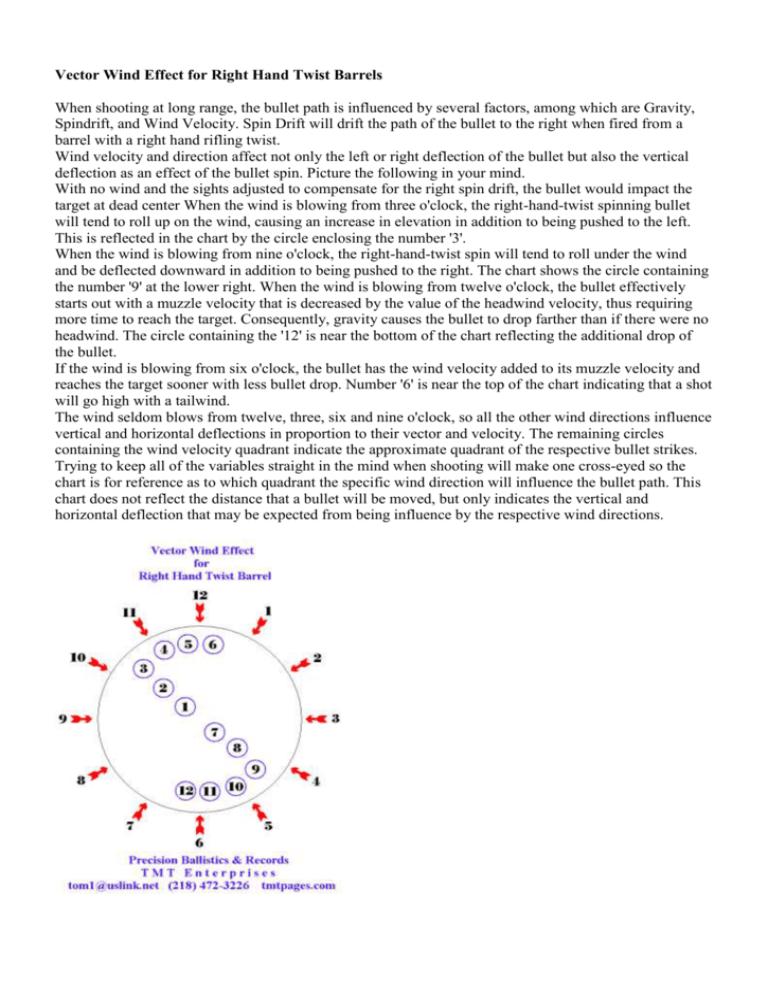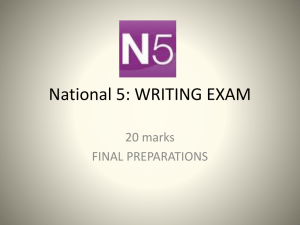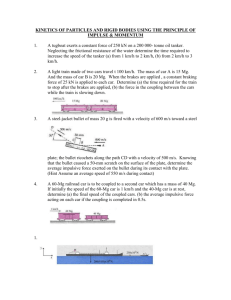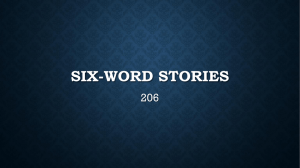Vector Wind Effect for Right Hand Twist Barrels
advertisement

Vector Wind Effect for Right Hand Twist Barrels When shooting at long range, the bullet path is influenced by several factors, among which are Gravity, Spindrift, and Wind Velocity. Spin Drift will drift the path of the bullet to the right when fired from a barrel with a right hand rifling twist. Wind velocity and direction affect not only the left or right deflection of the bullet but also the vertical deflection as an effect of the bullet spin. Picture the following in your mind. With no wind and the sights adjusted to compensate for the right spin drift, the bullet would impact the target at dead center When the wind is blowing from three o'clock, the right-hand-twist spinning bullet will tend to roll up on the wind, causing an increase in elevation in addition to being pushed to the left. This is reflected in the chart by the circle enclosing the number '3'. When the wind is blowing from nine o'clock, the right-hand-twist spin will tend to roll under the wind and be deflected downward in addition to being pushed to the right. The chart shows the circle containing the number '9' at the lower right. When the wind is blowing from twelve o'clock, the bullet effectively starts out with a muzzle velocity that is decreased by the value of the headwind velocity, thus requiring more time to reach the target. Consequently, gravity causes the bullet to drop farther than if there were no headwind. The circle containing the '12' is near the bottom of the chart reflecting the additional drop of the bullet. If the wind is blowing from six o'clock, the bullet has the wind velocity added to its muzzle velocity and reaches the target sooner with less bullet drop. Number '6' is near the top of the chart indicating that a shot will go high with a tailwind. The wind seldom blows from twelve, three, six and nine o'clock, so all the other wind directions influence vertical and horizontal deflections in proportion to their vector and velocity. The remaining circles containing the wind velocity quadrant indicate the approximate quadrant of the respective bullet strikes. Trying to keep all of the variables straight in the mind when shooting will make one cross-eyed so the chart is for reference as to which quadrant the specific wind direction will influence the bullet path. This chart does not reflect the distance that a bullet will be moved, but only indicates the vertical and horizontal deflection that may be expected from being influence by the respective wind directions.






